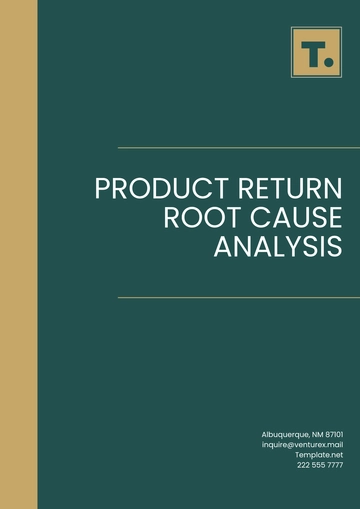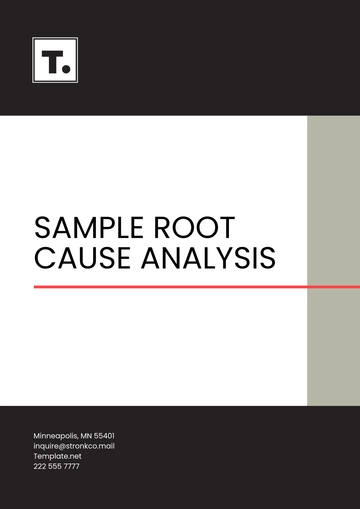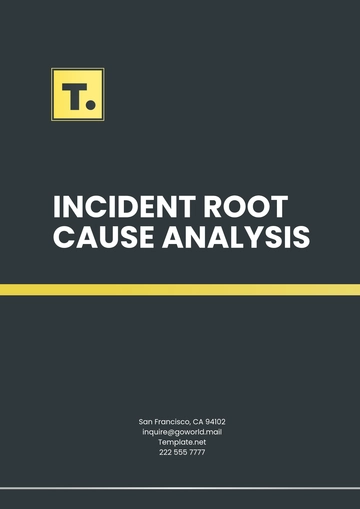Free Customer Feedback Analysis Report

Prepared by: [Your Name]
Company: [Your Company Name]
Date: [Date]
I. Executive Summary
This Customer Feedback Analysis Report presents a comprehensive evaluation of feedback collected from customers regarding our product offerings. Over the last quarter, we received a significant amount of input that reveals key trends and insights, particularly regarding product quality, customer service, pricing, and usability. The analysis highlights critical areas for improvement and offers strategic recommendations aimed at enhancing overall customer satisfaction and loyalty. By leveraging this feedback, we aim to refine our products and services to better meet customer needs, thus fostering stronger customer relationships and driving business growth.
II. Introduction
The purpose of this report is to analyze the customer feedback received over the last quarter to better understand customer experiences and perceptions. In today's competitive market, improving customer satisfaction and tailoring our offerings to match customer expectations are critical objectives for our business. This report not only seeks to present a thorough analysis of customer feedback but also aims to create a roadmap for actionable strategies that can enhance customer interactions with our brand.
III. Methodology
A. Data Collection
Feedback was collected through multiple channels, ensuring a holistic view of customer sentiment. The primary channels included:
Online Surveys: Distributed via email and our website, targeting recent purchasers.
Customer Service Interactions: Transcripts from support calls and chat interactions were analyzed for recurring themes and sentiments.
Social Media Platforms: Monitoring mentions and comments on platforms such as Twitter, Facebook, and Instagram provided real-time insights into customer opinions.
B. Sample Size and Demographics
A total of 500 responses were collected, ensuring a representative sample across various demographics, including:
Age: 18-24 (20%), 25-34 (35%), 35-44 (25%), 45+ (20%)
Geographical Distribution: Responses came from urban, suburban, and rural customers across various regions.
Product Usage: Customers who use different product lines were included to gain insights specific to each offering.
IV. Data Analysis
A. Themes Identified
The analysis focused on several key themes that recurred across the feedback:
Product Quality: Many customers expressed high satisfaction with the durability and performance of our products. However, some feedback suggested a need for more variety in product features.
Customer Service: While overall feedback was positive regarding responsiveness, customers noted that the quality of resolutions could be improved, particularly for complex queries.
Pricing: Several customers indicated that while they value the quality, they perceive our pricing to be higher than competitors, which affects their purchasing decisions.
Ease of Use: Feedback revealed that new users found the product interface somewhat challenging, indicating a need for better user onboarding materials and tutorials.
B. Statistical Methods
Quantitative data were analyzed using statistical tools, including:
Descriptive Statistics: To summarize feedback trends.
Correlation Analysis: To identify relationships between customer satisfaction levels and specific feedback themes.
Sentiment Analysis: Utilizing natural language processing (NLP) tools to gauge overall sentiment from open-ended survey responses.
V. Key Findings
A. Strengths
The feedback highlighted notable strengths, such as:
High Satisfaction with Product Quality: 78% of respondents rated product quality as 'excellent' or 'good.'
Positive Remarks about Customer Service Responsiveness: 85% of customers felt their inquiries were addressed promptly.
B. Areas for Improvement
Several areas for improvement were identified:
Concerns Regarding Pricing Strategies: 60% of respondents suggested that pricing adjustments could lead to increased loyalty.
Suggestions for Enhancing Product Usability: 55% of users recommended additional tutorials or a more intuitive user interface.
VI. Recommendations
A. Enhance Customer Engagement
Training Programs: Implement additional training for customer service representatives focused on problem-solving and empathy to further improve response times and service quality.
Customer Feedback Loop: Establish a system to regularly solicit feedback post-purchase, allowing customers to share their experiences.
B. Pricing Re-evaluation
Competitive Analysis: Conduct a detailed competitive analysis to address pricing concerns. This analysis should include comparisons of features, pricing tiers, and perceived value.
Promotional Strategies: Explore potential promotional offers or loyalty programs to attract price-sensitive customers.
C. Product Development
Usability Improvements: Prioritize usability enhancements based on specific customer feedback, particularly ease of navigation. Implement user testing sessions to gain real-time feedback on potential changes.
Onboarding Resources: Develop comprehensive onboarding materials, including video tutorials and FAQs, to assist new users in adapting to our products.
VII. Conclusion
This analysis underscores the importance of addressing areas for improvement to maintain high customer satisfaction levels. By implementing the recommended actions, we can capitalize on our strengths and meet customer expectations more effectively. Continuous monitoring of customer feedback will be essential to adapt and thrive in an evolving market landscape.
VIII. Appendices
A. Survey Questions
A full list of survey questions used for gathering feedback is provided in this section. Sample questions included:
How satisfied are you with the product quality?
How would you rate your experience with our customer service?
What factors influence your purchasing decisions the most?
B. Detailed Statistical Analysis
Extensive details on the statistical methods and analysis can be reviewed in this appendix section. This includes tables and graphs illustrating key findings, as well as detailed descriptions of the statistical tests performed.
- 100% Customizable, free editor
- Access 1 Million+ Templates, photo’s & graphics
- Download or share as a template
- Click and replace photos, graphics, text, backgrounds
- Resize, crop, AI write & more
- Access advanced editor
Easily analyze customer opinions with the Customer Feedback Analysis Report Template from Template.net. This fully customizable and editable template allows you to organize and evaluate feedback professionally. Editable in our Ai Editor Tool, it simplifies the process of gathering insights and improving customer satisfaction, making it an essential tool for any business looking to enhance customer relationships.





























